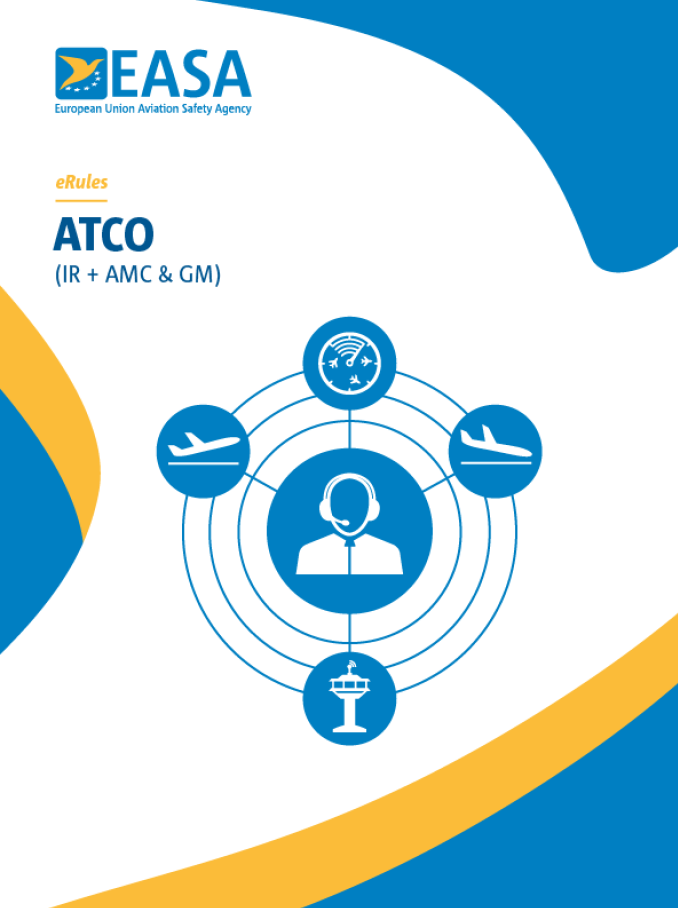ATCO.D.001 Objectives of air traffic controller training
Regulation (EU) 2015/340
Air traffic controller training shall cover the entirety of theoretical courses, practical exercises, including simulation, and on-the-job training required in order to acquire and maintain the skills to deliver safe, orderly and expeditious air traffic control services.
ATCO.D.005 Types of air traffic controller training
Regulation (EU) 2015/340
(a) Air traffic controller training shall consist of the following types:
(1) initial training, leading to the issue of a student air traffic controller licence or to the issue of an additional rating and, if applicable, rating endorsement, providing:
|
(i) |
‘basic training’ |
: |
theoretical and practical training designed to impart fundamental knowledge and practical skills related to basic operational procedures; |
|
(ii) |
‘rating training’ |
: |
theoretical and practical training designed to impart knowledge and practical skills related to a specific rating and, if applicable, to rating endorsement; |
(2) unit training, leading to the issue of an air traffic controller licence, the issue of a rating endorsement, the validation of rating(s) or rating endorsement(s) and/or the issue or renewal of a unit endorsement. It comprises the following phases:
(i) transitional training phase, designed primarily to impart knowledge and understanding of site-specific operational procedures and task-specific aspects; and
(ii) on-the-job training phase, which is the final phase of unit training during which previously acquired job-related routines and skills are integrated in practice under the supervision of a qualified on-the-job training instructor in a live traffic situation.
(iii) In addition to points (i) and (ii), for unit endorsement(s) that require the handling of complex and dense traffic situations, a pre-on-the-job training phase is required to enhance the previously acquired rating routines and skills and to prepare for live traffic situations which may be encountered in that unit;
(3) continuation training, designed to maintain the validity of the endorsements of the licence, consisting of:
(i) refresher training;
(ii) conversion training, when relevant.
(b) In addition to the types of training referred to in point (a), air traffic controllers may undertake the following types:
(1) practical instructors' training, leading to the issue, revalidation or renewal of an OJTI or STDI endorsement;
(2) assessor training, leading to the issue, revalidation or renewal of an assessor endorsement.
AMC1 ATCO.D.005(a)(2) Types of air traffic controller training
ED Decision 2015/010/R
UNIT TRAINING
Unit training should be undertaken by holders of student air traffic controllers licence or holders of air traffic controllers licence, as appropriate, for:
(a) the issue of an air traffic controller licence with a unit endorsement;
(b) the addition of a unit endorsement in an air traffic controller licence;
(c) the validation of a rating and rating endorsement, if applicable, in an existing licence;
(d) the addition of rating endorsement in an existing licence; and
(e) the renewal of an expired, suspended or revoked unit endorsement, where applicable.
GM1 ATCO.D.005(a)(2)(ii) Types of air traffic controller training
ED Decision 2015/010/R
ON-THE-JOB TRAINING
(a) On-the-job training may be supplemented for pedagogical reasons by theoretical instructions and computer-based training, part-task trainers or any type of simulators aiming at increasing knowledge, understanding and application of local procedures.
(b) Hours accumulated using these training tools and methods during this phase cannot be counted towards the minimum duration of on-the-job training established in accordance with AMC1 ATCO.D.055(b)(6), with the exception of training for procedures unlikely to be encountered in the operational environment during the training.
